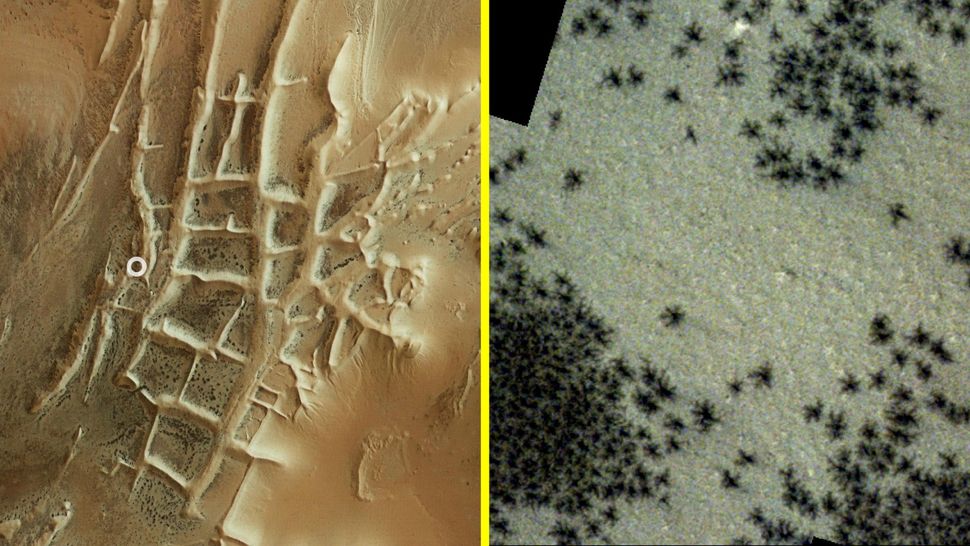Hundreds of black 'spiders' spotted in mysterious 'Inca City' on Mars in new satellite photos [View all]
By Stephanie Pappas published 2 days ago
Every spring, creepy black 'spiders' sprout up on Mars as buried carbon dioxide ice releases dusty geysers of gas. New ESA images show the phenomenon has begun in the strange Inca City formation.

Mars' Inca City formation (left) is overrun with mounds of black 'spiders' (right), a regular springtime phenomenon on the Red Planet (Image credit: ESA/DLR/FU Berlin (left) ESA/TGO/CaSSIS (right))
Arachnophobes need not fear: A new European Space Agency (ESA) image of Martian "spiders" actually shows seasonal eruptions of carbon dioxide gas on the Red Planet.
The dark, spindly formations were spotted in a formation known as Inca City in Mars' southern polar region. Images taken by ESA's Mars Express orbiter and ExoMars Trace Gas Orbiter show dark clusters of dots that appear to have teeny little legs, not unlike baby spiderlings huddling together.
The formations are actually channels of gas measuring 0.03 to 0.6 miles (45 meters to 1 kilometer) across. They originate when the weather starts to warm in the southern hemisphere during Martian spring, melting layers of carbon dioxide ice. The warmth causes the lowest layers of ice to turn to gas, or sublimate.

A digital model of Mars' Inca City formation made with recent data from the Mars Express satellite's High Resolution Stereo Camera. Traces of black 'spiders', actually the product of dusty gas geysers, are visible throughout the image. (Image credit: ESA/DLR/FU Berlin)
As the gas expands and rises, it explodes out of the overlying ice layers, carrying with it dark dust from the solid surface. This dust geysers out of the ice before showering down onto the top layer, creating the cracked, spidery pattern seen here. In some places, the geysers burst through ice up to 3.3 feet (1 m) thick, according to ESA.
More:
https://www.livescience.com/space/mars/hundreds-of-black-spiders-spotted-in-mysterious-inca-city-on-mars-in-new-satellite-photos

